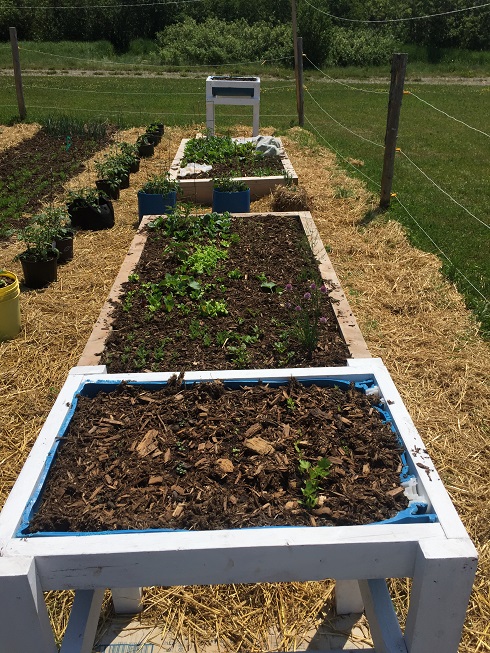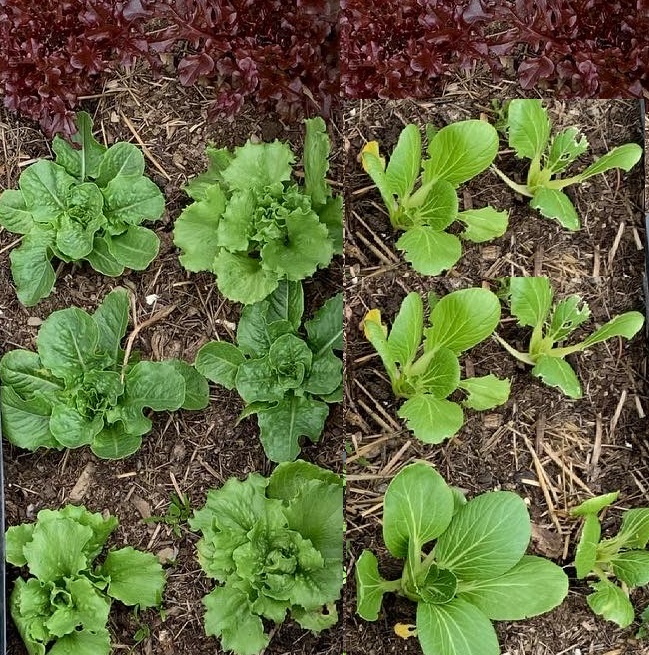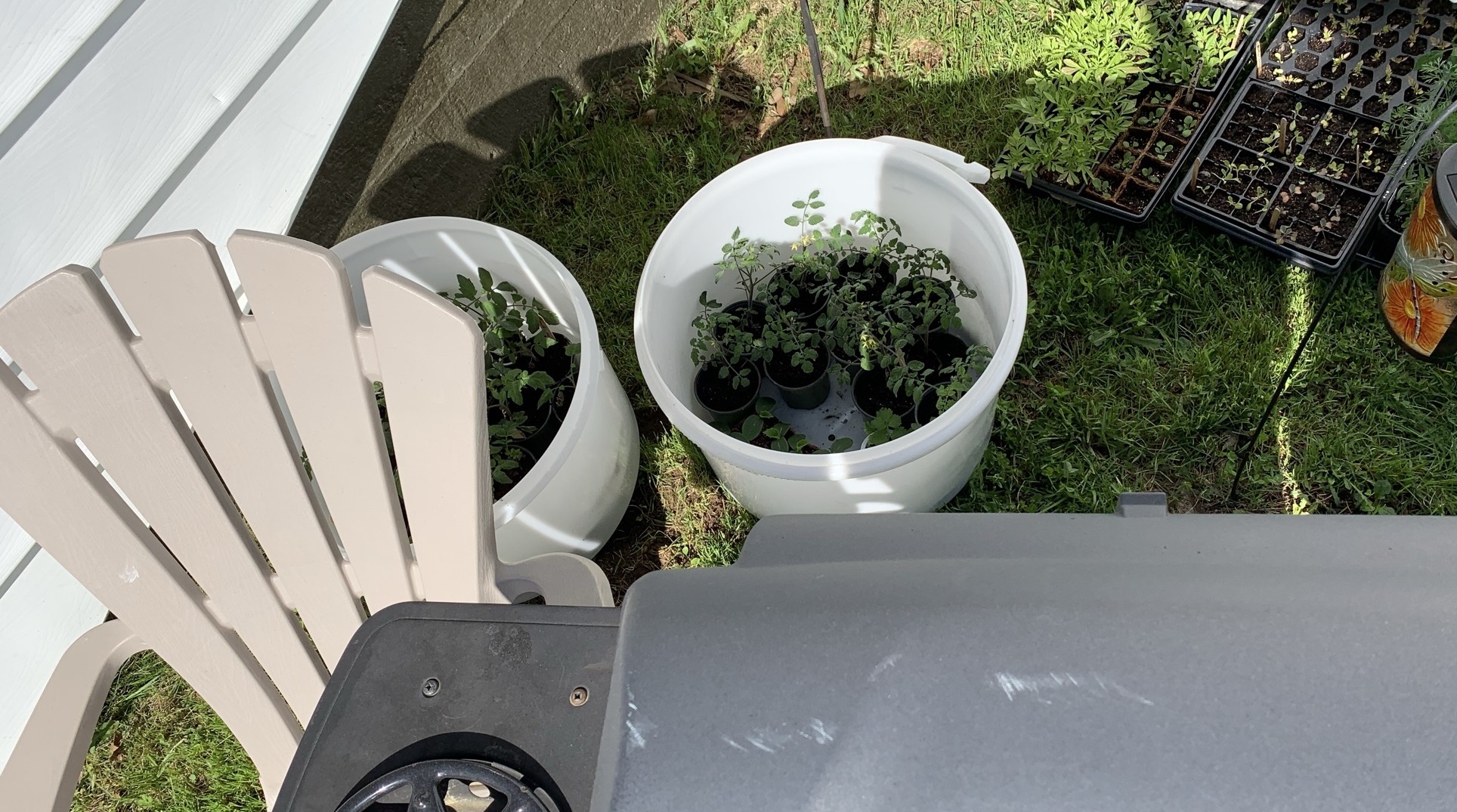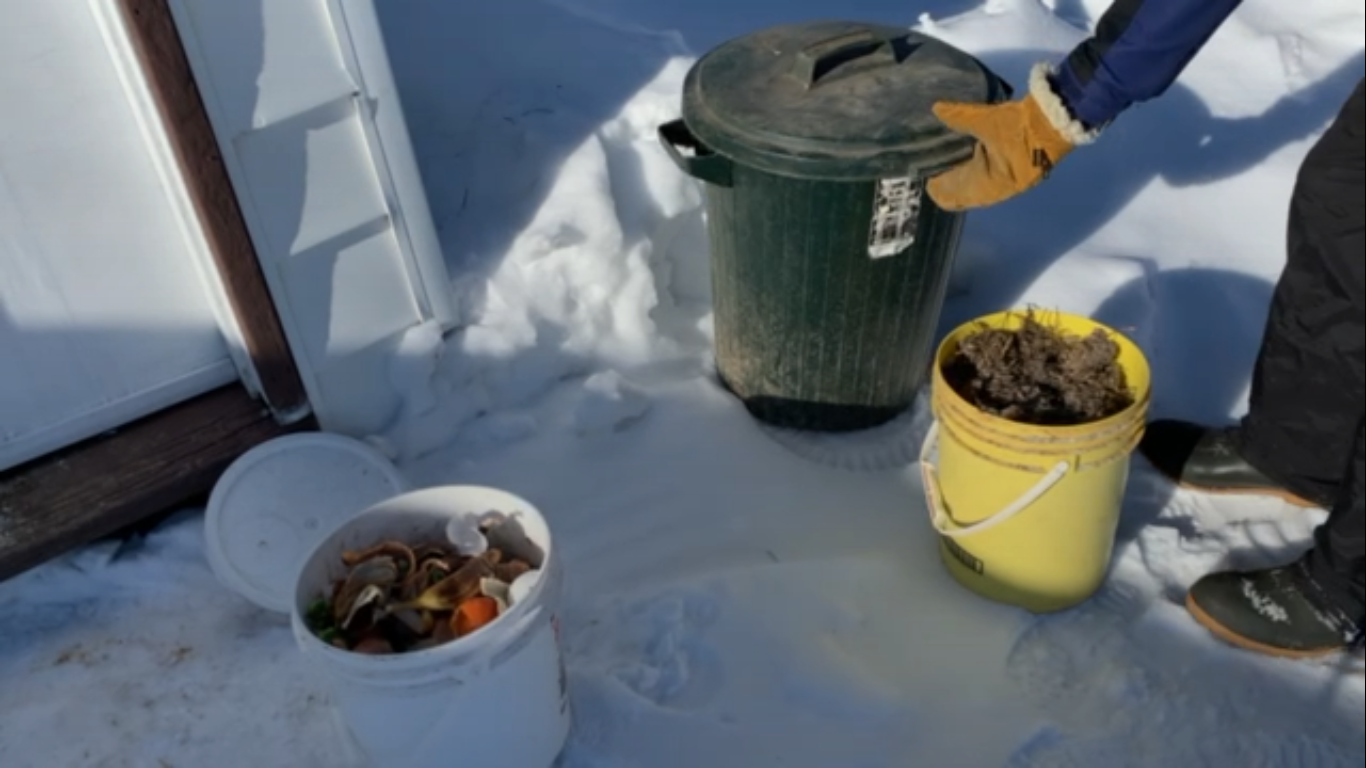Controlling Weeds is Vital to Vegetable Garden Success
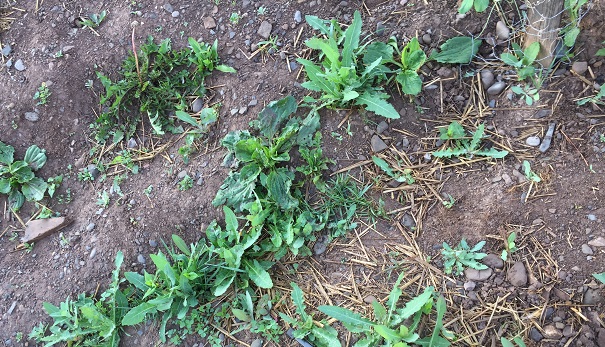 These weeds have well established roots
These weeds have well established rootsOutside of controlling pest insects and diseases, controlling weeds has to be one of the biggest problems for the vegetable gardener.
If you are from the old school, it can be tempting to try to find a cure in a bottle, spray can, or bag. While large scale farmers may have little choice; for the home gardener, a few quality tools, some know-how, and some consistency will keep your weed problems manageable.
The ideal way for controlling weeds is intensive gardening in raised beds with lots of mulch. When you use methods such as square foot gardening where every inch of space is carefully planned, and lots of mulch is applied, there is little room for weeds.
The one biggest drawback of this method, especially for a large garden, is the prohibitive startup cost. So what do you do to control weeds in a traditional type vegetable garden?
Tips for Controlling Weeds in a Traditional Vegetable Garden
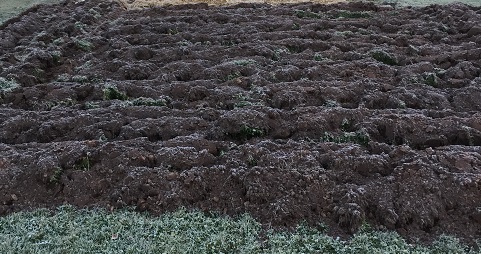 Preparing a new garden patch for next spring
Preparing a new garden patch for next spring1. Don’t wait until spring to get started. If you are starting a new garden, preparation begins in the autumn. The ideal solution for a large garden is to get the sod turned over with a land plow before winter so it can rot over the winter. In the spring, get the plot harrowed to break up the sod.
With a small garden, you can cover the ground with cardboard or a thick layer of newspaper in the autumn to rot the sod. Of course, you could totally remove the sod with a spade but this method is very labor intensive. It also removes a lot of valuable organic matter and nitrogen from your soil which will need replaced with well rotted compost or manure.
2. Don’t bite off more than you can chew. As a beginning gardener, it’s easy to get all excited and start too big. Remember that planting is the easiest part. When the novelty wears off, you don’t want to have more than you can handle. It’s easy to lose the incentive to even try if you know you can’t keep up.
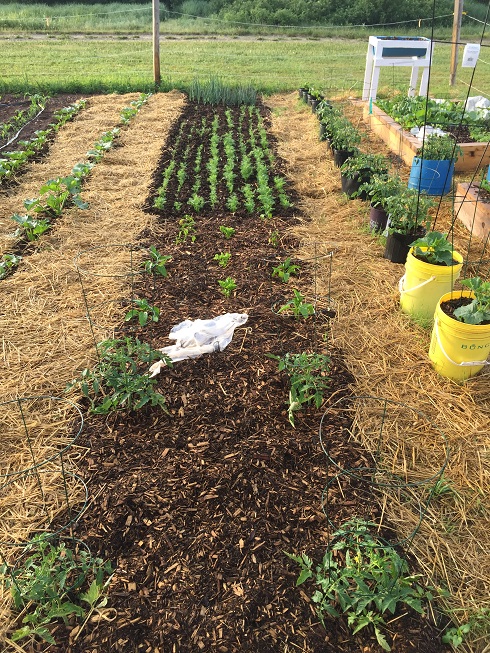 Put mulch between the rows for controlling weeds and retaining moisture Put mulch between the rows for controlling weeds and retaining moisture |
3. When planning your garden, don’t leave unnecessary space between plants or between rows. The wider the pathway between rows, the more ground there is to compact with your feet, and the more space there is for weeds. Follow the row spacing suggestions on the seed package. Obviously you have to leave room for air circulation so your tomatoes and string beans don't become diseased and don't forget that your squash vines will sprawl out and take lots of space. But there is no reason for a three foot path between rows of carrots or beets. With a small garden you can mulch between the rows. If you have a large garden you might want to consider a wheel hoe or small cultivating tiller for between the rows. |
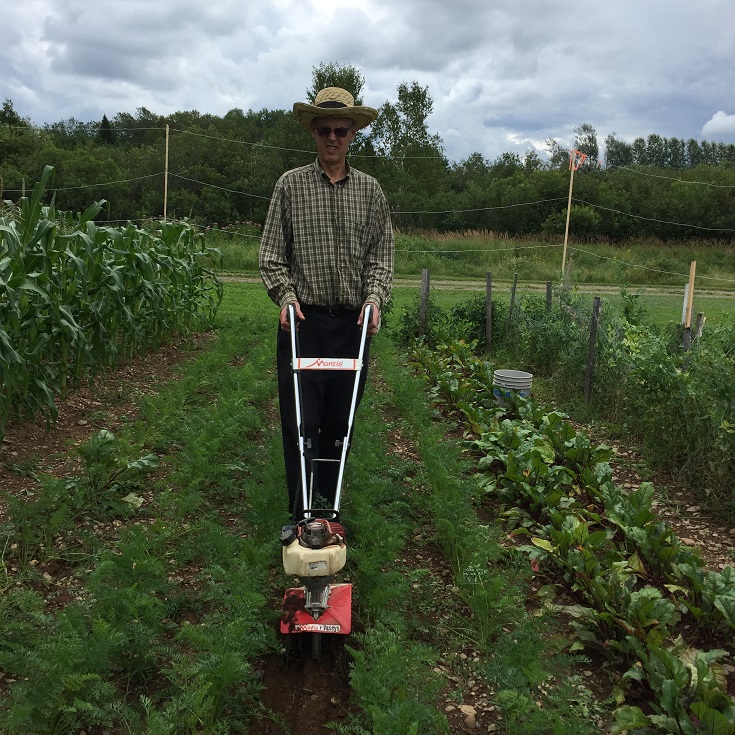 A small tiller works for weeding between rows A small tiller works for weeding between rows |
4. Weeding is most critical early in the season. Weeds will choke young plants and rob them of valuable nutrients. Your plants will forgive you at harvest time if you are too busy to keep all the weeds in check but NOT early in the season.
5. Get the weeds while they are small and when the soil is moist after a rain or after watering. A young weed can be easily extracted without damaging the surrounding plants. Don’t let the weeds get well established.
6. Do a little each day. There is nothing more invigorating than 10 minutes spent in your garden in the morning before work or in the evening before retiring. That 10 minutes each morning can save you 2 hours on the weekend.
 Sharp, long-handled hoe
Sharp, long-handled hoe7. Get yourself a good sharp weeding hoe with a nice long handle (especially if you are tall). For most kinds of weeds, it is not necessary to pull them out by the roots if you get them small. Slice them off just below the soil surface early on a hot day and they will not survive. Keep your hoe sharp and avoid rocks.
8. Know your weeds. Your sharp hoe works fine for lamb’s quarters, but not for dandelions or plantain which have long deep roots. Unfortunately, you need a good long tool to make sure you get all the roots of your dandelion or it will be back. The really nasty weeds are those with rhizomes that spread underground and break off when you try to pull them. When you see them, dig the entire root system up. Once they take hold in a large garden, they are almost impossible to remove organically.
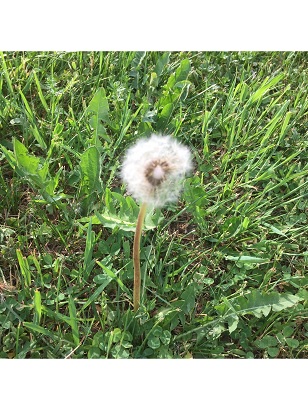 Dandelion that is gone to seed
Dandelion that is gone to seed9. Last but not least, DON’T LET WEEDS GO TO SEED!!! You’ve worked all season to get rid of those weeds. If you let them go to seed, you will lose all you gained and then some. One dandelion plant produces an average of 15,000 seeds.When you see flowers on weeds, you know what comes next. If you’re serious about controlling weeds, you need to get those babies pulled!
